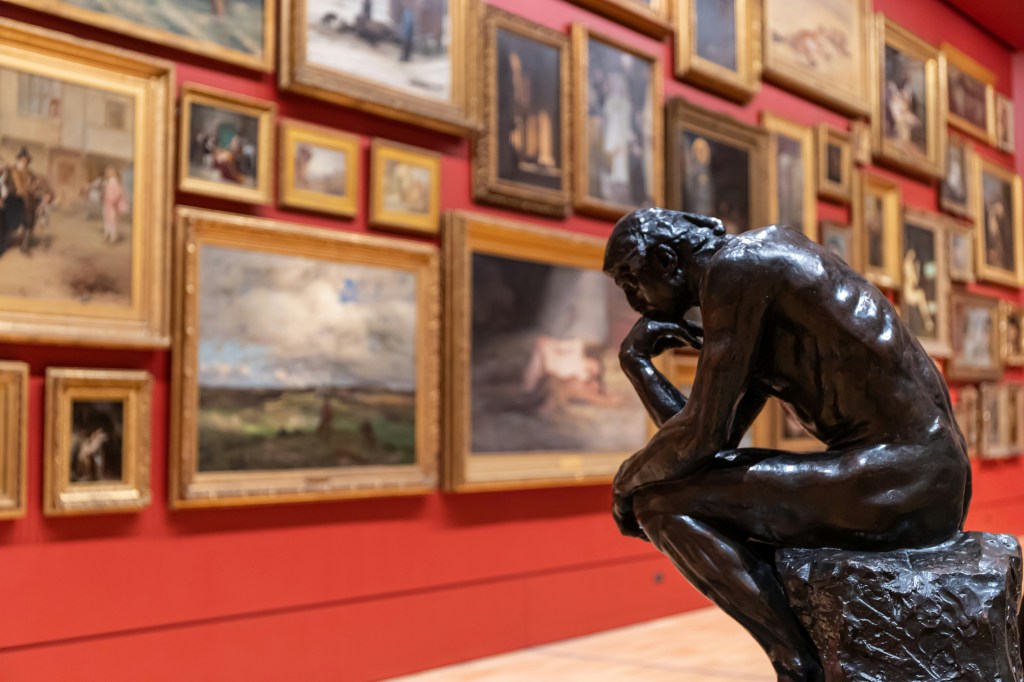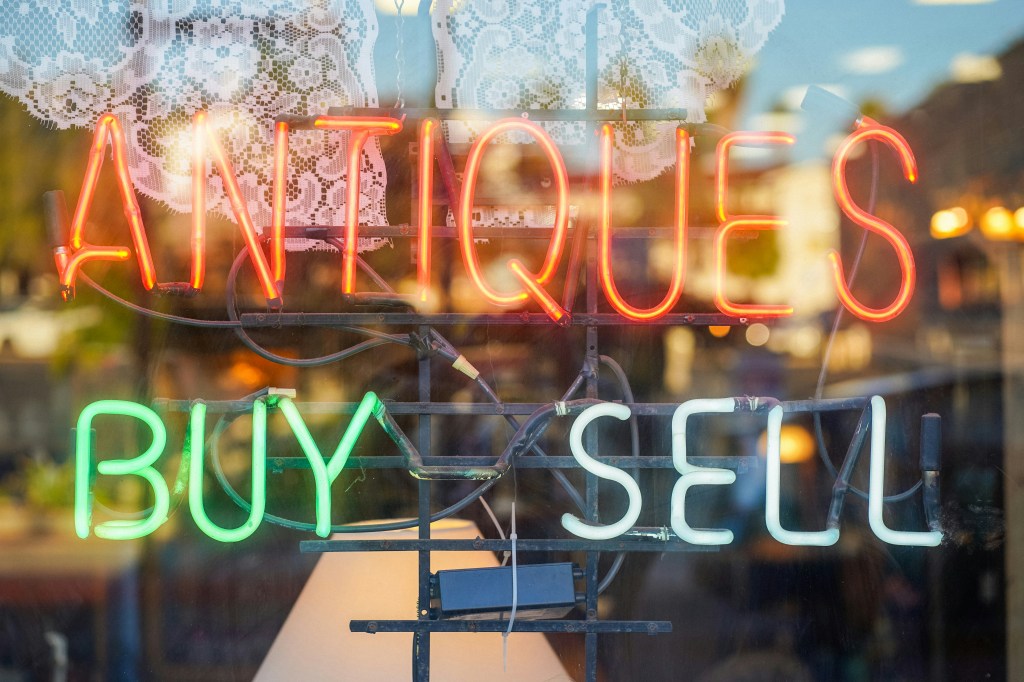
Smart Strategies for Collecting on a Budget: Curate Without Compromise

Smart Strategies for Collecting on a Budget: Curate Without Compromise
Discover practical strategies for budget-friendly collecting that maintain quality. Learn how to curate your collection without compromise—read more!
Why Budget Collecting Works for New and Seasoned Hobbyists
Collecting can be a rewarding hobby that allows individuals to express their passions and interests through curated collections. However, many people believe that building a meaningful collection is expensive. In reality, collectors can find joy and value without overspending by focusing on what they love, conducting thorough research, and prioritizing their purchases.
This guide will explore clarifying your collecting passions, setting achievable goals, and effectively allocating your budget. Whether you’re a seasoned collector or just starting, you’ll discover strategies to help you build a collection that truly reflects your unique tastes.
Define Your Focus and Set a Realistic Spend
A practical budget, both monthly and annually, helps align your targets with financial reality and manage expenses. Regularly reassessing your motivations ensures your purchases reflect your values. Frugal strategies, budgeting, and refining your focus are essential for collectors.
- Picking a Focus: Choosing a clear focus is essential for any collector. Start by determining your purpose and interests, which might include specific collectibles like sports memorabilia, comic books, artwork, or elements of pop culture. Some may prefer categories like historical pieces, rare items, or nostalgic memorabilia.
- Research: Once you’ve chosen your focus, thoroughly research it. Understanding the history and identifying coveted items, including “holy grail” pieces, is essential for assessing value during your hunt. Valuable resources include books, discussions with collectors, museums, and online forums.
- Setting a Budget: Creating a budget is essential for collectors. Assess your finances and prioritize essential expenses like bills and groceries to avoid overspending on your hobby. Set a monthly or annual budget based on your situation, and remember to track your expenses to stay on top of your collecting goals.

Where to Find Affordable Pieces: Shows, Auctions, and Local Scores
Finding deals on collectibles offers various entry points for different collecting preferences. Whether you enjoy online shopping or prefer in-person finds, everyone has options.
In-person opportunities
In-person shopping gives you the ability to connect with fellow collectors and the opportunity to inspect items firsthand. Here are a few notable in-person options:
- Flea Markets: These lively environments often encourage haggling, allowing collectors to score great deals.
- Antique Shops: While these shops offer unique finds, negotiations may not be possible, and additional fees may be applied.
- Thrift Stores: Although slightly pricier due to rising demand, these businesses can still yield affordable treasures, with little room for haggling.
- Specialized Markets: Depending on the type of market, you may have the chance to negotiate, but be aware that entry fees might apply.
- Auctions: Typically, auction prices are final, with no room for negotiation.
- Estate Sales: These can vary, as some sellers may allow haggling while others might not.
- Garage Sales: Great option for those who want to stay local. They often welcome negotiation, making them favorites for many.
Online platforms
For those who prefer shopping from the comfort of home, the online landscape offers options to explore:
- Auction Websites: eBay and similar sites offer an expansive range of collectibles, and auction formats allow competitive pricing.
- Online Swaps: Engaging in swap meet-ups through online platforms offers a unique way to trade items with other collectors.
- Facebook Marketplace: This platform facilitates local transactions and often features collectibles at reasonable prices.
- Specialized Collectible Websites: Numerous niche websites are dedicated to specific types of collectibles, ensuring you can find exactly what you’re looking for.

Understand Fees, Condition, and Restoration Before You Bid
Navigating the world of auctions can be exciting and challenging, making it essential to understand key terms and factors that influence the true value of items.
Auction Terms
Understanding auction terms is essential for navigating the bidding process effectively:
- Bidding Increments: refer to the minimum amount by which a bid must increase. Typically, these increments rise by about 10% with each new bid, significantly influencing the final sale price.
- Return Policies: Not all auction sites allow returns; many items sold are final, meaning you must be confident in your purchase.
- Buyer’s Premium: the percentage of the final price that goes to the auction house, impacting the overall amount you will spend.
Condition and rarity
Items in good condition tend to be more valuable, and rarity can enhance this value. However, poor condition can diminish worth, and rarity alone doesn’t guarantee higher worth. Restoration may improve worth, but many often prefer original condition. Understanding market value and details helps prevent overspending and ensures a more rewarding collecting experience.

Art Collecting on a Budget: Small Starts, Editions, and Installments
If you’re interested in collecting art but unsure where to start or think it’s impossible on a budget, you’re in the right place. Many believe art is expensive, but you can build a meaningful collection without overspending.
Budget-friendly tips for collecting art
You can absolutely collect art while sticking to your budget. While pieces from well-known artists may be beyond reach, the world of art is filled with possibilities if you know where to look:
- Emerging Artists: Check out emerging artists that interest you at local galleries, art fairs, and auctions to connect directly and potentially get discounts. If local options are scarce, explore online galleries for niche tastes.
- Limited-Edition Prints: Limited-edition prints are a great way to collect art affordably. They often appreciate that artists gain recognition. Collecting signed editions lets you invest wisely and support emerging artists.
- Installment Options: Some online galleries offer installment plans for higher-ticket purchases, but ensuring these fit within your budget is important. Staying mindful of spending will enhance your collecting experience.

Sports Cards on a Budget: Commons, Lots, Trading, and Social Deals
Buying bulk lots in sports card collecting can stretch your budget and help you learn about different sets.
- Common Cards: Common cards are affordable and ideal for beginners, allowing easy access without the pressure of chasing rare cards. They help you start your collection, which can later be traded or sold. These cards also teach you about sorting, handling, and assessing card condition.
- Graded Cards: Graded cards come at a higher price but are a solid investment. They are professionally evaluated, ensuring their worth and authenticity, and they have potential for long-term appreciation.
- Finding Deals: To find great deals on sports cards, utilize apps, local card shops, and thrift stores. Building relationships with store owners can lead to insights into new releases. Stay updated by signing up for newsletters and following relevant social media accounts.
- Connecting with the Community: Engaging with the sports card community enhances the collecting experience. Use social media to connect with other collectors and consider joining clubs or attending conventions to meet enthusiasts and broaden your knowledge.

Storage and Preservation That Don’t Break the Bank
Proper storage is essential for preserving the long-term value of your collectibles.
- Conditions for Preservation: The method of storage directly affects preservation. Aim for stable temperatures and low light exposure while regularly monitoring humidity levels. Fluctuations can lead to mold, warping, and other damage that may decrease the value of your collection.
- Archival Quality Materials: Investing in archival-quality materials is key. Acid-free slabs, sleeves, binders, and boxes are designed to protect your items from harmful environmental factors, ensuring they stay in excellent condition.
- Areas to Avoid: Attics, basements, and garages often experience temperature fluctuations and excessive moisture. Avoid direct sunlight as UV rays can fade and damage collectibles. Use UV-blocking cases and sleeves to maintain the quality of your items.

When Money Gets Tight: Reset, Sell Extras, and Embrace Patience
Circumstances can shift unexpectedly when collecting. Flexibility, such as refocusing goals and tightening budgets, is crucial.
- The Value of Patience: You can’t acquire everything at once, and waiting for the right piece at the right price can lead to more satisfying finds. Enjoying what you already have while searching for new additions keeps your hobby sustainable.
- Refining Your Collection: Periodically refining your collection is beneficial. Selling duplicates or items that no longer fit your interests can create space for new, meaningful pieces. Combining patience with a clear focus enhances your overall collecting experience.

Track Purchases, Prices, and Care to Protect Value
Maintaining a detailed log of your memorabilia purchases is crucial for assessing worth and addressing insurance needs. By noting what you paid, when, and where, you can track pricing trends and manage your collection more effectively.
- Creating an Inventory: Start your log by recording the item’s purchase price, acquisition date, and vendor information. Include the current market value for future reference. An inventory list should also detail where and how each item is stored, along with any important documents. For example, any certifications, such as a certificate of authenticity and proof of purchase, should be noted in your log.
- Categorizing Your Collection: If you have various types of memorabilia, organize your log into categories. This approach simplifies record-keeping and makes it easier to locate specific items, whether they’re sports collectibles or antiques.
Care and preservation
Proper care is essential for maintaining the value of your collection. Use techniques like removing adhesive tags and storing items away from light to prevent damage. These preservation practices help ensure your memorabilia remains in excellent condition over time.

Insurance Considerations for Budget-Minded Collectors
Even modest purchases can accumulate significantly over time, making specialty collection insurance a valuable consideration for collectors. This type of insurance can enhance your homeowner’s policy by covering various risks, including theft, fire, water damage, and accidental breakage. It also protects items in transit or those stored away from home. It is beneficial if you frequently buy collectibles at shows, ship items to graders, or utilize off-site storage.

Your First Steps to an Affordable Collection
Once you’ve established your budget and focus, compare your current insurance coverage to a policy designed explicitly for collectibles. This will ensure your protection matches how your collection moves, whether between your home, storage, shows, or during shipping. This small step can help safeguard years of smart, budget-friendly finds.
At Collectibles Insurance Services, we understand the importance of protecting your collection. Founded by collectors for collectors, we offer tailored insurance solutions that go beyond standard homeowners’ policies. Since 1966, we have provided comprehensive coverage against various risks, including theft, accidental damage, and environmental hazards. Additionally, we include coverage for shipping and transit, ensuring your collection remains safe while on the road.
Whether you own rare sports memorabilia or other valuable items, we are dedicated to helping you enjoy your passion without worrying about potential loss. Our commitment to collectors like you drives us to provide the best protection for your possessions.
Sources
https://www.jancisrobinson.com/articles/guide-collecting-budget
https://vintagevirtue.net/blog/collecting-on-a-budget-tips-and-tricks-for-building-a-stunning-collection-without-breaking-the-bank
https://journalofantiques.com/features/starting-collection-budget/
https://www.thesmartercollector.com/post/how-to-keep-collecting-when-your-budget-tightens
https://www.riseart.com/guide/2317/how-to-start-an-art-collection-on-a-budget
https://www.cardcapsule.us/blogs/blog/building-a-sports-card-collection-on-a-budget
https://agora-gallery.com/art-blog/collecting-art-on-a-budget/?fbclid=IwY2xjawItVGRleHRuA2FlbQIxMQABHc91-hv9fJI95-2I3f_taAo8NcphSip9uE-_-zX3SBvieEFQ1E0UfPAz3g_aem_zDy_r1fLaYRQwF–59OV0A
https://affordablecollectibles.net/
About Collectibles Insurance Services
Collectibles Insurance Services has been protecting collections since 1966 and all coverage is provided by a carrier with a group rating of “A” (Excellent) by AM Best, the leading rating agency for the insurance industry.
Comprehensive coverage includes, but is not limited to: accidental breakage, burglary, fire, flood, loss in the mail, theft, natural disasters, and other causes of loss unless specifically excluded from the policy. Deductibles start at $0 for collector policies and we provide coverage for the market value of your collection for losses in excess of $50.
Additionally the protection extends At home and away, and we don't require collection itemization and serial number nor extensive paperwork and red tape.
